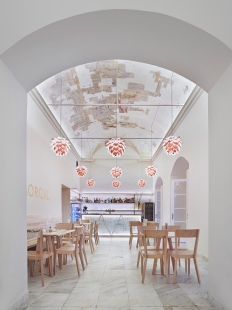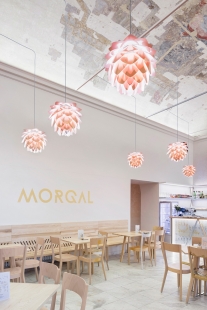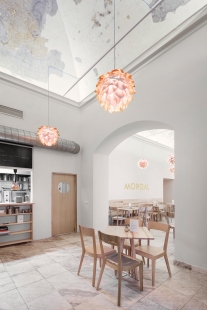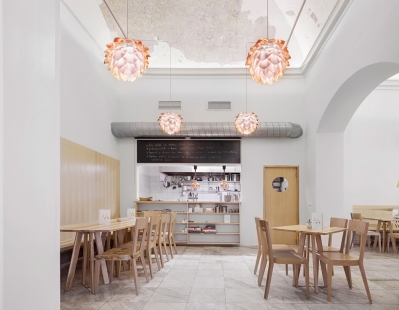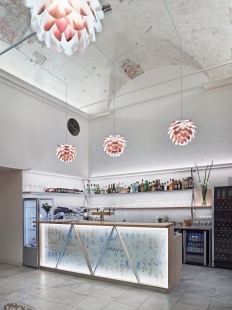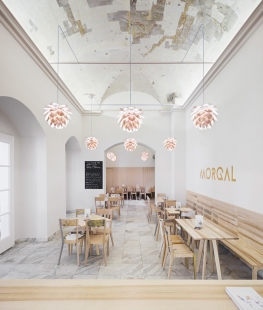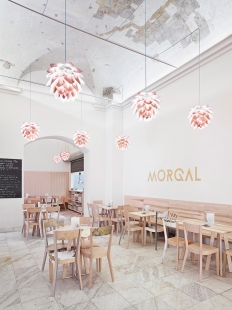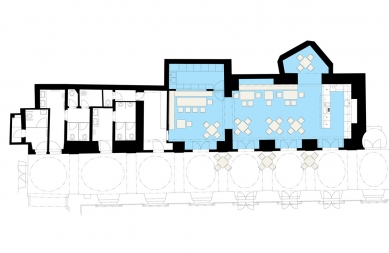
Café Morgal

 |
The Morgal gallery café opened in June 2014 in the Lieutenancy Palace on Moravian Square in Brno. The baroque building, with a history dating back to the Middle Ages, originally served as an Augustinian monastery, then as the seat of the governor, and during communism as the Museum of the Labor Movement. Currently, the Moravian Gallery exhibits its collections of old art here.
The name of the café was created by combining the abbreviations of MORavian GALery.
Space and Inspiration
In studying the history of the building, it was discovered that the first and second sacristies of St. Thomas Church were located in the current café's space, through which one could once pass directly from a small salon in the café.
During the renovation, the remains of baroque frescoes were uncovered, which inspired the furnishings, painting, and graphics of the new café.
I decided to treat the café as the main nave of the church. I returned the space to its longitudinal orientation towards the altar, which in every café is the bar, and the furnishings were arranged in two rows along the walls, including benches.
The café is accessed from a hallway that is also used for seating guests and functions as a winter garden for sheltering plants from the courtyard, which is entirely utilized as the café's garden.
Concept and Interior
I informally named the café's concept "New Baroque." My goal was to refer to the time of the building's creation, not to deny the fresco but rather to develop motifs from it; and at the same time, to work with contemporary shapes. Is there such a thing as contemporary tasteful baroque?
As part of this consideration, I decided to work with layered ornamentation and patterns derived from the shape of the letter M and from motifs in the ceiling painting: for example, cross-sections in the backrest of the bench, prints on glass, gold dotting in the painting behind the bar, supports of tables and shelves). The entire interior reflects baroque colorfulness referring to the uncovered fresco (blue-gray, pink, ivory, gold, brown).
The concept was further realized by Vendula Chalánková with her fifteen original paintings on chairs, which not only quote the colors and ornaments from the fresco but also its state after forty years of communist heritage "care." Each of the painted chairs is a unique piece.
The furniture was custom-made from solid ash wood, complemented by ERA chairs from the company TON. The lights suspended from a separate structure are shaped like unfolded pearls and literally illustrate the original meaning of the word barroco.
Martin Hrdina
The English translation is powered by AI tool. Switch to Czech to view the original text source.
3 comments
add comment
Subject
Author
Date
respekt
Eva Müllerová
15.07.15 07:29
...barroco...
Zdeněk Skála
15.07.15 09:06
Ano a přidat
EVO
15.07.15 11:53
show all comments


